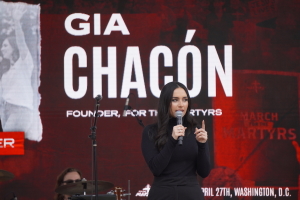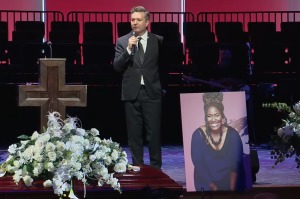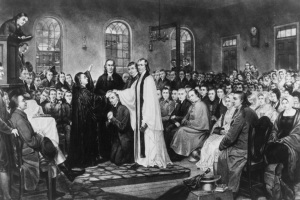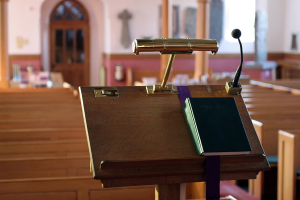Bringing Orthodoxy and Evangelicalism Together

In a recent meeting discussing the future of Islam in Britain, Baroness Sayeeda Warsi, a prominent lawyer and the first Muslim woman appointed to a U.K. Cabinet, expressed her deep belief in Britain's need to return to its Christian roots.
"For minority faiths to feel truly comfortable about who they are, the majority has got to be sure about who it is …," said Warsi. "A Europe that is sure about its Christian heritage is a much easier place to be a Muslim."
This is unheard of — a Muslim woman calling for a return to Christian orthodoxy. In an even more contrarian statement, Warsi proposed that mosques in Britain be redesigned without minarets, even resembling village churches.
Warsi's call is a healthy reminder for Christians too, of our own need to embrace our orthodox roots. It reveals a struggle within Christianity that the church has struggled to resolve, and that is the age-old feud between orthodoxy (correctness of belief) and orthopraxy (correct practice of belief).
A quick look at the global demographics of Christianity is all it takes to grasp the magnitude of this issue:
With more than 2.3 billion adherents, Christianity is currently the largest religion in the world — though Islam is well on its way to matching it in size — yet it's also, perhaps, the most fragmented one. As of 2014, there are over 45,000 distinct Christian denominations, and, every day, two more spring into existence.
The history of schism within the Christian faith is long and complicated, but the results are obvious to the naked eye. As noted by Warsi, Christianity, especially in the West, has been pulled in so many directions that it has lost its common identity and, in the process, its influence.
The Pew Research Center projects that Europe's Christian population will shrink by almost 100 million people by 2050, which will cause the United Kingdom, France, Netherlands, Bosnia and Herzegovina, and the Republic of Macedonia to no longer have a Christian majority. In North America, "Christians are projected to decline from 78% of the U.S. population in 2010 to 66% in 2050."
Christianity is still, and will be for a while longer, the largest religion in the world, but it's certainly struggling through an unsure time. And as time goes by and the church splits and drifts from its core identity, causing an identity crisis within our own ranks.
These are the issues we faced at the church movement I lead in India. With over 780 unique languages — and countless dialects — spoken by thousands of distinct ethnic groups who follow half a dozen major religions, India is by far one of the most diverse nations in the world. In fact, what many people might not know is that while Christians make barely a fraction of the population, India's Muslim population is the second largest in the world, and is projected to become the largest share of the world's entire Muslim population by 2050. All of this is in a country where Buddhism was birthed and where Hinduism remains the majority faith.
How does a modern Christian church maintain its identity and influence in such an overwhelmingly diverse environment?
For us, it began with a return to India's Christian roots. The history of Christianity in India goes back almost 2,000 years to the Apostle Thomas and the Syrian Orthodox Church. India has one of the most ancient Christian populations in the world. Christianity is as Indian as India itself. Thus, as Evangelical Indians we find comfort, depth, and security in tying our roots back to the source of our heritage.
Tracing our faith's history helped us also rework our orthopraxy to fit our current culture. We resolved that our faith should look and feel authentically Indian, and not as a Western import. We moved away from the modern worship experience, which often mixes faith with entertainment, and we opted instead for modernizing the old practices of the church. We readopted the creeds of the early church, revived the liturgical prayers, and reinstated the public reading of the Bible.
We also returned to the weekly practice of the Eucharist, and although we do not hold to the belief that the bread and wine turn into literal flesh and blood, we cherish the deep spiritual encounter we experience with Christ every time we partake in the Holy Communion.
We expect the Holy Spirit to work in our midst; the "spiritual" is an important component in Indian culture.
These changes have made our worship experience feel like walking into an authentically Indian faith, instead of adopting a foreign religion. They have also provided credibility to our voice when we engage in social work and justice. Our polity protects us from those who aim to persecute Christians for being western imports, and we are treated with the highest regard because we are thought of as Indian, first.
The lessons of ancient Christian practice move us past our tribalism, denominations and territorialism to return us to our roots, grafting us firmly into the history of God's ancient church. We are evangelical in our theology and orthodox in our practice.




























